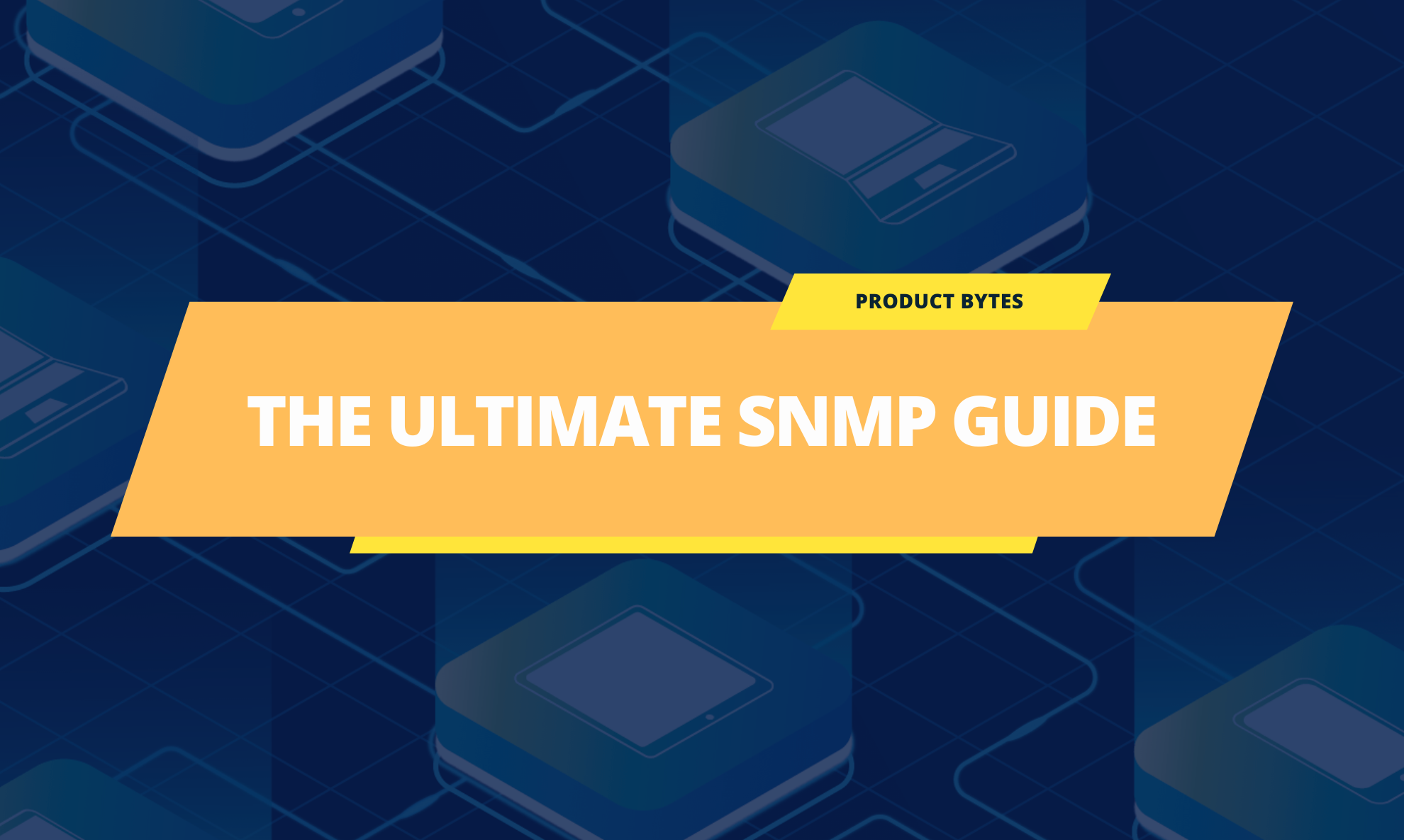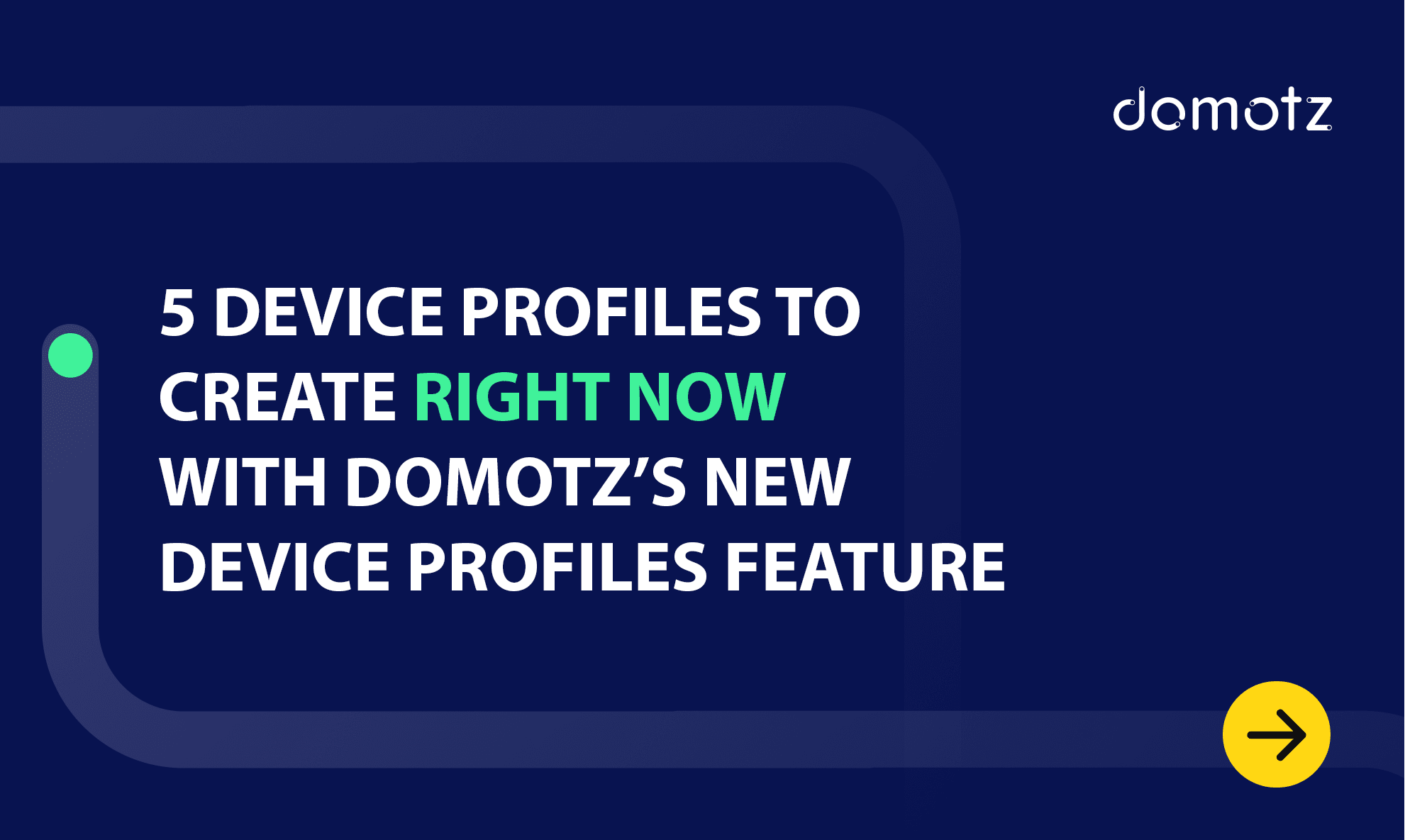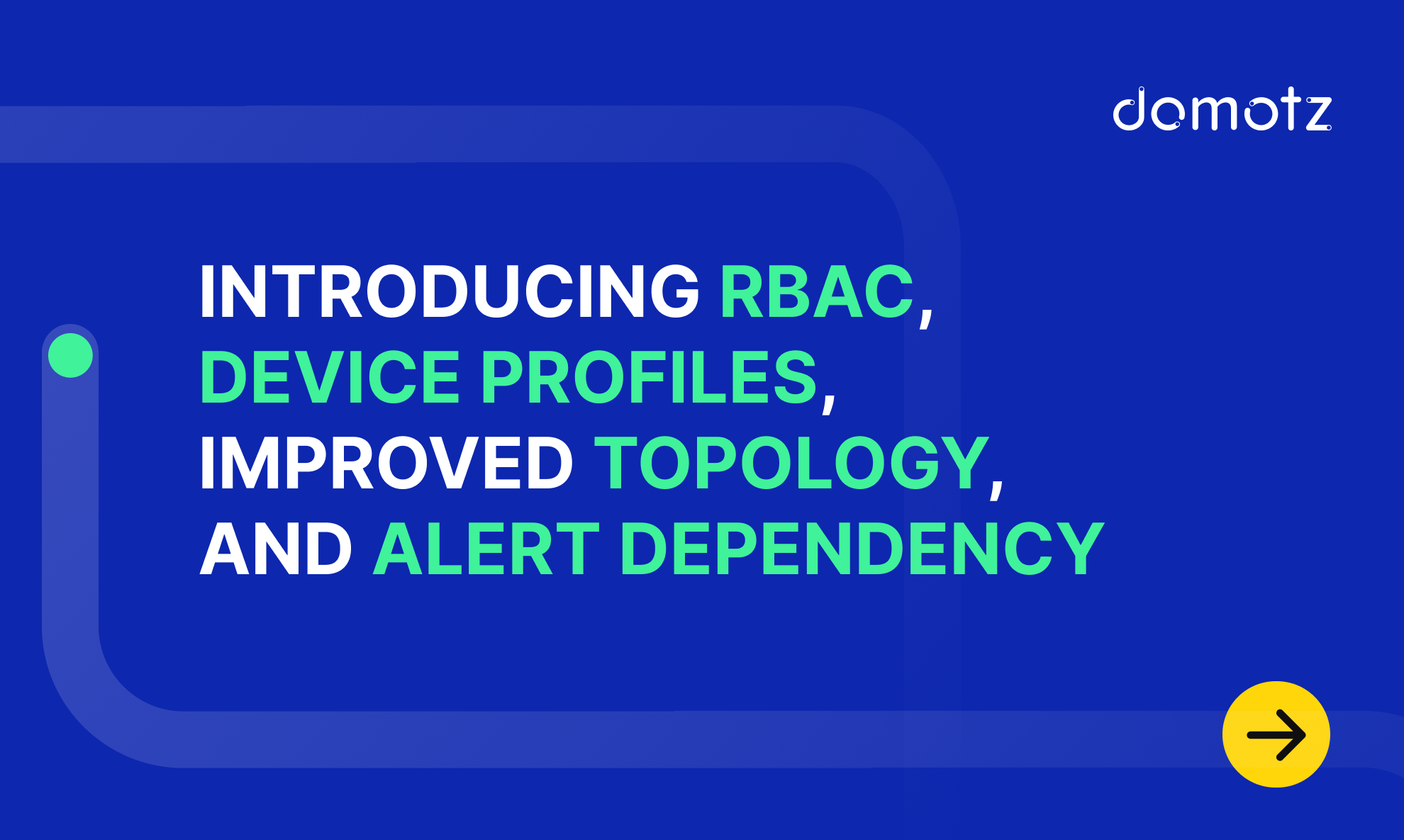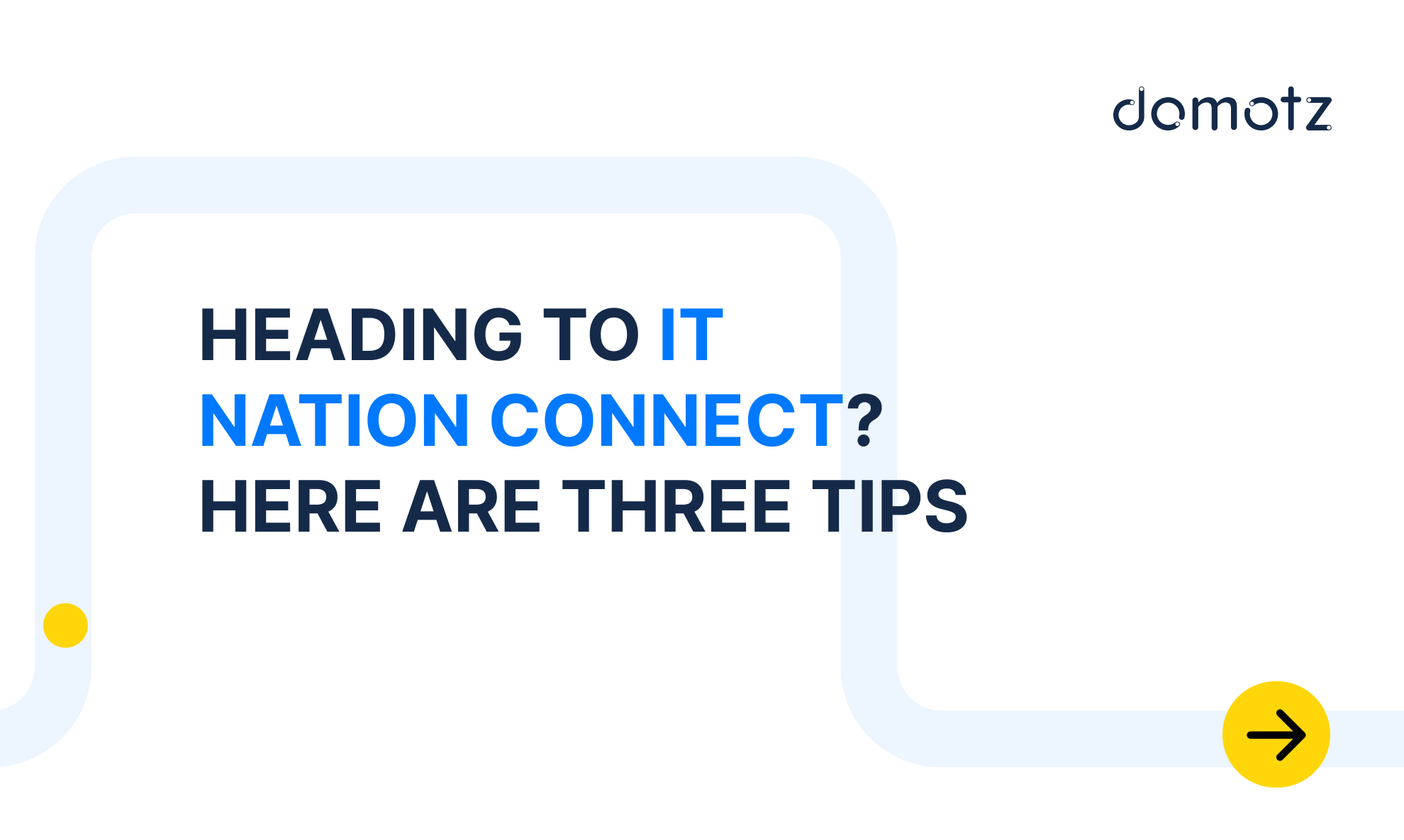Simple Network Management Protocol (SNMP) is a powerful protocol. You can use it to monitor and control all kinds of hardware. However, you need to know how to leverage its potential.
These 13 learning resources will help you become an SNMP expert and put the protocol to good use with Domotz:
- What is SNMP?
- SNMP Versions
- SNMP Components
- SNMP Port
- SNMP OIDs
- SNMP Server Monitoring
- SNMP Community Strings
- SNMP Walk
- SNMP Polling
- Best SNMP Monitoring Tools
- Pre-configured SNMP Templates
- Server Room Temperature Monitoring
1. What Is SNMP and How Does It Work?
SNMP is a leading network monitoring and observation tool, and it’s anything but simple. This overview covers what it is and how the standard is defined. You’ll also review the main components in a network managed by SNMP, security levels, ports, and other fundamentals.
Read the full article about What is an SNMP Port and How Does it Work.
2. What Are the SNMP Protocol Versions?
SNMP is an evolving protocol. It has changed over time, and it’s critical to understand how.
Different versions have different capabilities and limitations. This blog series explains what sets the SNMP versions apart and what these distinctions mean for your security outlook:
3. SNMP Components
You may use SNMP to manage switches, routers, and servers, but they’re all just components from the protocol’s perspective.
SNMP divides components into four main classes: the manager, the agent, the messages, and the commands. It also supports general devices and other data components, such as MIBs, community strings, traps, and OIDs. This blog explains what falls under which categories and how components relate to each other.
Read the full article about the SNMP Components: SNMP Manager, Agent, Messages and Commands.
4. What Is an SNMP Port?
SNMP collects information about networked hardware, but how does it share the results?
SNMP ports are UDP-powered/TCP-capable building blocks for SNMP command, data, and message handling. This blog explains what they are and how they work with different components.
Read the full article about What is an SNMP Port.
5. SNMP OIDs
SNMP Object Identifiers (OIDs) connect SNMP data to actual devices. These components allow you to find and monitor individual network assets. They also make it possible to track asset performance statistics over time.
But it’s not as simple as just knowing which OID corresponds to which devices. Different SNMP versions have distinct OID features and capabilities. This blog explains how everything works, how to find OIDs, and how to integrate OID-based monitoring into your network management routine with Domotz.
Read the full article about How to Find SNMP OIDs for Monitoring.
6. SNMP Server Monitoring
How do you know your servers are performing as expected? Server monitoring is a great way to stay informed about a range of metrics, like traffic, storage space, and CPU usage.
This blog covers some of the benefits and fundamentals of server monitoring. It discusses how server management software operates and SNMP’s role in making assets more visible. Finally, you’ll learn how to get started by setting up Domotz to monitor your servers.
Read the full article about SNMP Server Monitoring.
7. SNMP Community Strings
SNMP data is useful because it exposes a wealth of information. But this also represents a potential security weakness.
SNMP community strings let you manage network devices safely using approved credentials and preset privacy levels. This blog will teach you about the different kinds of community strings, how to discover them on specific OSes, and how different SNMP versions changed how these security features worked. You’ll also see code examples of how to configure your own community strings – along with best practices for doing so securely.
Read the full article about SNMP Community Strings.
8. SNMP Walk Defined
An SNMP walk lets you string SNMP requests together to collect information from many devices in one go. It’s also useful for populating MIB databases quickly or configuring multiple systems.
This blog will teach you a few ways to use or create SNMP walks. You’ll see how to do things from the command line or an application. You’ll also learn about the underlying chained commands behind SNMP walk techniques.
Read the full article about SNMP Walk Definition.
9. SNMP Polling
Polling involves querying SNMP devices for information. Where SNMP walks gather data at scale, polling zeroes in on the specific assets you want to investigate.
This blog explains why polling is vital for gauging network health. You’ll learn how Domotz makes it simple to poll at your chosen frequency and select different sensors to probe for feedback.
You’ll also get to know a few practical examples of SNMP polling in the real world and explore why so many device vendors depend on the technique. We also cover some alternatives and version-specific security considerations.
Read the full article about SNMP Polling.
10. The Best SNMP Monitoring Tools
There are multiple ways to use SNMP monitoring to stay on top of your network admin workload. But they’re not all equal, even if some seem similar.
This blog will help you choose the ideal monitoring platform for your use case. It covers essentials for effective monitoring tools, such as cost and setup difficulty.
We also address an often-overlooked factor: what kind of data you need to extract from your devices.
Finally, we review six of the best monitoring tools and explain why each might be worthy of consideration. If you’re thinking about investing in SNMP monitoring tools, check out this blog first.
Read the full article about The Best SNMP Monitoring Tools.
11. Pre-configured SNMP Templates for Printers, NAS, and UPS
SNMP is highly customizable – which is great for custom monitoring. Unfortunately, this same feature can also make it hard to get started
This blog teaches you how to use pre-configured SNMP templates in Domotz to get up and running faster. You’ll learn what types of devices you can monitor with templates, why templates are so useful, and how Domotz uses automatic discovery to ease the journey.
Read the full article about the Pre-configured SNMP Templates for Printers, NAS, and UPS.
12. SNMP Sensors for Server Room Temperature Monitoring
Monitoring temperatures in server rooms is an essential part of protecting your most valuable physical assets. It takes hard work to get the job done right, however.
This blog is the ideal walkthrough for implementing effective monitoring practices with Domotz. You’ll discover what you need on the hardware and software sides. Then, you’ll learn how to pick and configure sensors, set up sensor OIDs in Domotz, and configure temperature and humidity alerts.
Read the full article about SNMP Sensors for Server Room Temperature Monitoring.
13. SNMP Monitoring for the Raspberry Pi
The Rasberry Pi is an affordable, credit-card-sized minicomputer known for its ease of use and configurability. This blog explains how you can use a Pi for SNMP monitoring by installing a Domotz agent. You’ll also get a quick refresher on SNMP basics
Read the full article about SNMP Monitoring for the Raspberry Pi.
Conclusion
Knowing how the SNMP protocol works is the first step in using it effectively. However, it’s also critical to have the right tools for the job.
The SNMP protocol can generate vast quantities of fine-grained data. Network monitoring that supports SNMP is essential to making sense of this information.
Learn how to get started by trying Domotz.
Further reading:



